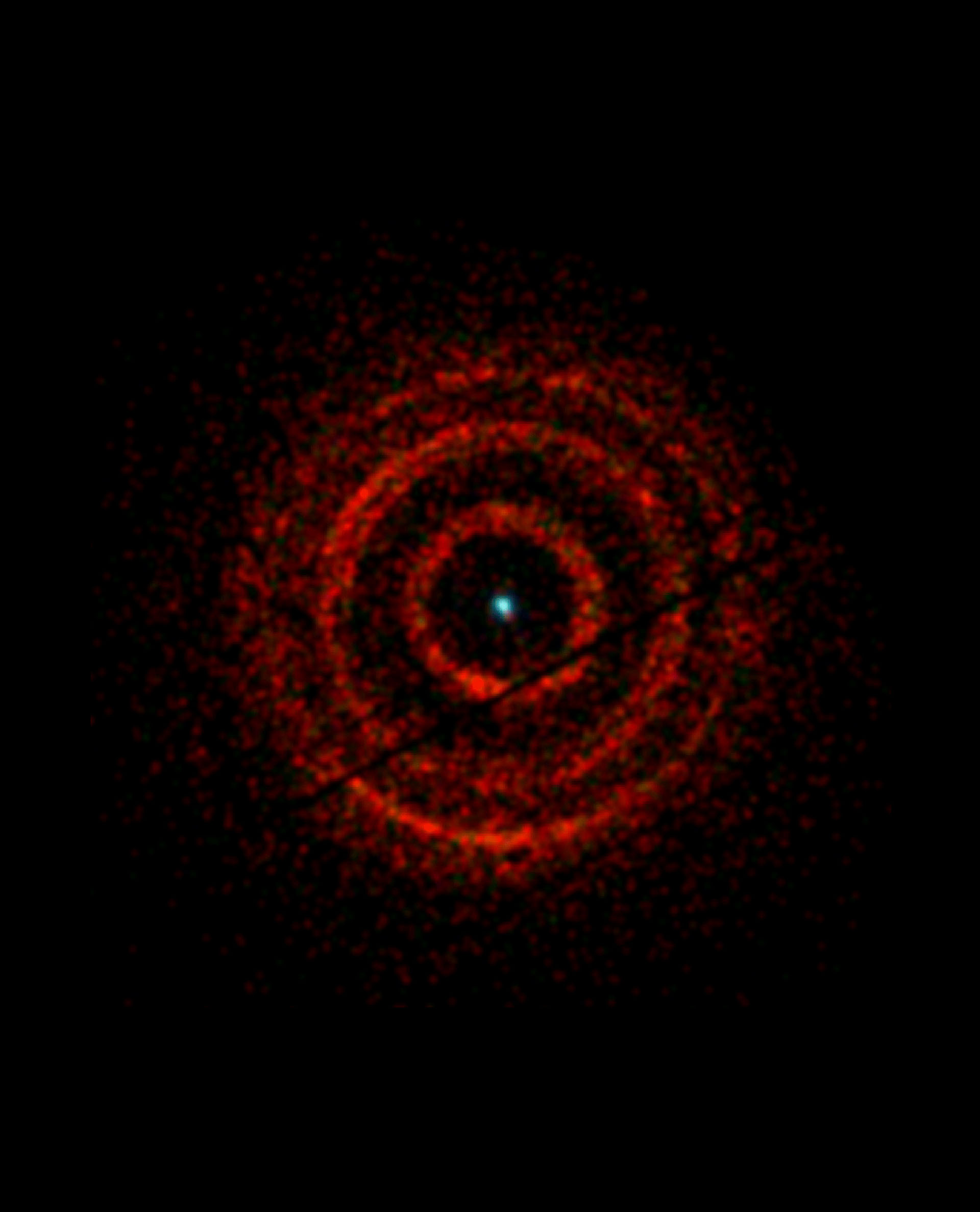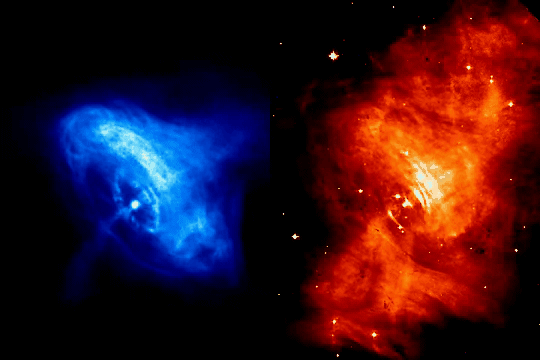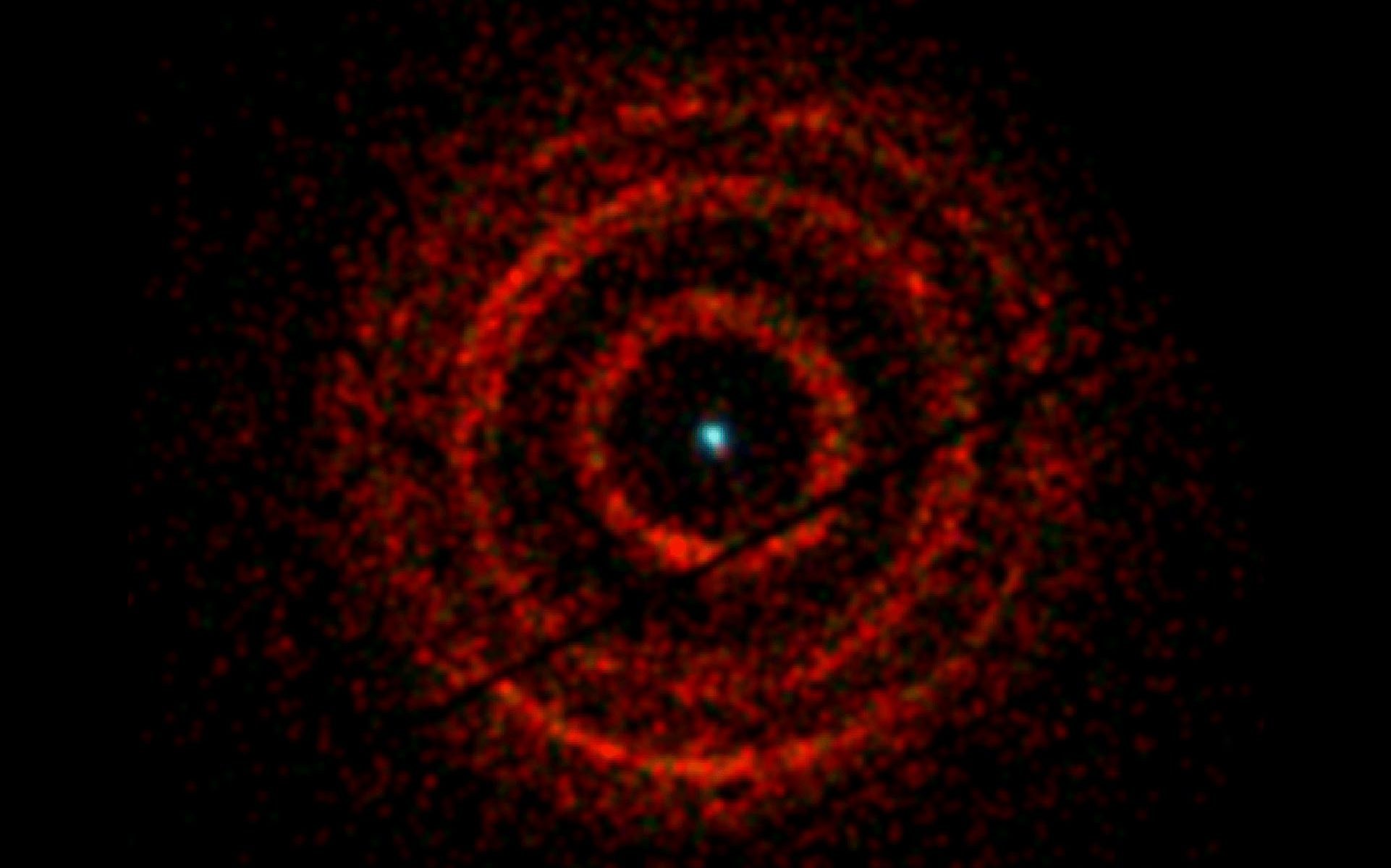UF astrophysicist studies the magnetic fields and cosmic streams pouring out of a black hole.
“There’s this childhood awe, with your jaw hanging open, this feeling of ‘Wow, look at that thing,’” says Stephen Eikenberry about his area of black holes and neutron stars — what he describes as the most extreme environments in the universe. “And the physics are poorly understood, so it’s a mystery as well.” Eikenberry, who holds a joint appointment in UF’s Departments of Astronomy and Physics, has dedicated his career to this mystery. Most recently, he and his research group measured the magnetic field in V404 Cygni, a binary system featuring a black hole with a diameter of 64 kilometers.
The weirdness of black holes has been a point of fascination since the late 18th century, says Eikenberry, but it wasn’t until Einstein developed his general theory of relativity that astrophysicists began to predict — and gradually affirm — some of his strange predictions, such as that near and inside black holes, gravity was enormously strong, particles would spin to extraordinary velocities, and time itself would slow. “One thing we do know is that black holes seem to grab up some of the cosmic material that is close by [in this case, from the normal star in the binary system] and eject it in streams of light,” says Eikenberry. “Pushing steady, concentrated streams of that material out of the deepest gravitational well in the universe at nearly the speed of light … that’s a trick that we don’t understand.”
His group, which comprises six PhD students and four undergraduates, aims to enhance their understanding. In their recent Science paper, for which Eikenberry’s graduate student Yigit Dalilar was lead author, they share some of their findings from their Canarias InfraRed Camera Experiment (CIRCE). Eikenberry says with pride that CIRCE is located at the Canary Islands’ Gran Telescopio Canarias (GTC) — the world’s largest telescope. CIRCE led an international bevy of instruments, including NASA’s NuStar space telescope, to measure the 2015 streams produced by V404 Cygni, which has such outbursts every two to three decades. Although prevailing theories suggested otherwise, the magnetic field around the black hole was actually fairly weak, making its ejection of the super streams, which clock in at nearly the speed of light, yet another cosmic mystery.
 Andrew Beardmore (Univ. of Leicester) and NASA/Swift
Andrew Beardmore (Univ. of Leicester) and NASA/SwiftThe weirdness of black holes has been a point of fascination since the late 18th century, says Eikenberry.
To explore these mysteries, Eikenberry and his group focus on infrared and optical astronomy, between which the lines are sometimes blurred. As an example, CIRCE is a near-infrared instrument and measures radiation with wavelengths slightly longer than visible light. Eikenberry also designed and, with his graduate students, postdocs, and engineers, built FLAMINGOS-2, an infrared spectrograph located at Chile’s Gemini South, one of the twin telescopes of the Gemini Observatory. They joined the LIGO and Virgo Scientific Collaborations in detecting the collision and merger of two neutron stars in 2017. Infrared and near-infrared detection allow astronomers to study distant astronomical phenomena, especially major emitters and “things that go bang,” says Eikenberry.
Eikenberry studied at Harvard, where his dissertation focused on the emission mechanisms of pulsars (highly magnetized and dense neutron stars), under Giovanni Fazio, a renowned physicist in infrared astronomy. “We built the world’s first photon-counting infrared detector for astronomy and used that to make very high-speed observations of the Crab Pulsar, which is in the Crab Nebula. It flashes off and on 30 times a second — roughly,” he adds.

The prime example of a pulsar – the Crab Nebula Pulsar, M1. These actual observations show the expansion of shock waves emanating from the Pulsar interacting with the surrounding nebula. The Crab Pulsar actually pulsates 30 times per second, not seen here, a result of its rotation rate and the relative offset of the magnetic pole. Charndra X-Rays (left), Hubble Visible light (right). NASA, JPL-Caltech
Eikenberry then began a professorship at Cornell University. However, the opportunity to work on Gran Telescopio Canarias located on the island of La Palma, Spain, inspired Eikenberry to leave the Ivy League. UF is the only stand-alone educational institution in the world that partners with GTC, the largest telescope on Earth. “For me, the big draw leaving a tenured Ivy League professorship and Ithaca, New York, to come to UF was and is to work with GTC,” says Eikenberry. After designing and building CIRCE for GTC, he’s now working on another instrument for GTC, MIRADAS, an externally funded $10 million detector on which UF is the lead institution and he is the principal investigator.
“We’re really excited about the future of the MIRADAS instrument and more findings from CIRCE as well,” Eikenberry says. “This latest result with CIRCE is, for me, a great personal fulfillment of a long-held dream.”
